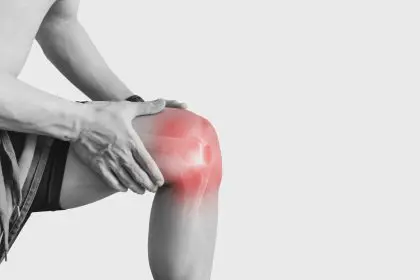Psoriatic arthritis represents one of the more challenging inflammatory conditions in rheumatology, affecting approximately 20% of individuals with psoriasis while sometimes developing independently of skin symptoms. This chronic autoimmune disease can significantly impact quality of life through joint pain, inflammation, and related complications. Recent insights from rheumatology experts shed light on the complexities of psoriatic arthritis and offer valuable perspectives for both patients and healthcare providers.
The autoimmune foundations of psoriatic arthritis
Psoriatic arthritis (PsA) occurs when the immune system mistakenly attacks healthy cells in the joints, causing inflammation, pain and potential joint damage. While researchers haven’t identified the exact triggers, evidence points to a combination of genetic predispositions and environmental factors that initiate this autoimmune response.
Unlike some forms of arthritis that follow predictable patterns, psoriatic arthritis can manifest differently across individuals. Some patients experience primarily peripheral joint inflammation affecting fingers, toes, wrists and ankles. Others develop axial involvement targeting the spine and sacroiliac joints. Some unfortunate individuals experience both patterns simultaneously, creating complex treatment challenges.
This autoimmune foundation explains why treatments often focus on modulating immune responses rather than simply addressing pain symptoms. Understanding this biological basis helps patients comprehend why certain medications work and what treatment goals should realistically include.
Recognizing the diverse symptom pattern
According to rheumatology specialists, recognizing psoriatic arthritis requires awareness of its varied manifestation patterns. The condition typically presents with multiple symptoms that may include:
- Joint pain and stiffness that often worsens with inactivity and improves with movement
- Visible swelling and tenderness in affected joints, creating a sausage-like appearance in fingers or toes (dactylitis)
- Characteristic skin and nail changes including pitting, ridging, or separation of nails from the nail bed
- Persistent fatigue that significantly exceeds normal tiredness and doesn’t improve with rest
- Enthesitis, inflammation where tendons and ligaments attach to bone, causing pain in areas like the heel, elbow, or chest wall
Medical experts emphasize that approximately one-third of psoriatic arthritis patients develop chronic widespread pain lasting three months or longer across multiple body regions. This persistent pain pattern represents a significant challenge, requiring comprehensive management approaches beyond addressing visible inflammation.
The diversity of symptoms explains why diagnosis often takes time and may require evaluation by multiple specialists. Patients experiencing joint pain alongside skin changes should specifically mention both symptoms to their healthcare providers to facilitate appropriate referrals and testing.
The critical importance of addressing comorbidities
Rheumatologists highlight that effective psoriatic arthritis management requires attention to more than just joint symptoms. Comorbidities, additional health conditions occurring alongside psoriatic arthritis, significantly impact treatment outcomes and quality of life. Common comorbidities include:
Obesity, which increases inflammation and may reduce treatment effectiveness Cardiovascular disease risk factors requiring monitoring and management Diabetes and metabolic syndrome occurring at higher rates in psoriatic arthritis patients Depression and anxiety, which can intensify pain perception and reduce treatment adherence Sleep disorders that create fatigue and exacerbate pain cycles
During initial consultations, specialists employ a comprehensive assessment approach to identify these interrelated conditions. This holistic evaluation allows for coordinated treatment planning that addresses all factors contributing to a patient’s symptoms.
For patients, this insight underscores the importance of transparent communication with healthcare providers about all health concerns, not just joint symptoms. Seemingly unrelated conditions may actually interact with psoriatic arthritis, affecting treatment choices and outcomes.
Distinguishing between inflammatory and non-inflammatory pain
One of the most valuable insights rheumatology experts share involves differentiating between pain sources in psoriatic arthritis patients. While inflammation directly causes many symptoms, a significant portion of chronic pain stems from other mechanisms that require different treatment approaches.
Specialists employ sophisticated evaluation methods including surveys based on fibromyalgia criteria to map pain patterns across body regions. This comprehensive assessment helps determine whether increased pain results from active inflammation, central sensitization (nervous system changes), mechanical factors, or combinations of these mechanisms.
This distinction proves crucial when selecting appropriate treatments. While anti-inflammatory medications and biologics effectively target inflammatory pain, they may provide minimal benefit for pain stemming from other sources. Patients experiencing pain despite well-controlled inflammation might benefit from:
Physical therapy to improve joint mechanics and muscle support Pain neuroscience education to understand chronic pain mechanisms Cognitive behavioral approaches addressing pain perception and coping strategies Medication adjustments targeting central pain processing rather than inflammation alone
For patients, understanding this distinction prevents frustration when inflammation-targeted treatments don’t resolve all pain. It also emphasizes the importance of honest communication about ongoing symptoms even when laboratory tests show reduced inflammation.
The transformative role of lifestyle modifications
Perhaps most empowering among rheumatologists’ insights is the significant impact lifestyle factors have on psoriatic arthritis symptoms and overall wellbeing. Despite revolutionary advances in medication options, medical experts consistently emphasize that specific lifestyle changes provide benefits that medications alone cannot achieve.
Regular aerobic exercise stands as a cornerstone recommendation despite seeming counterintuitive to patients experiencing pain. Exercise strengthens the muscles supporting affected joints, improves cardiovascular health, reduces inflammation, and releases endorphins that naturally moderate pain. Doctors suggest starting with gentle, low-impact activities like swimming, cycling or walking, gradually increasing intensity as tolerated.
Sleep quality represents another critical factor in managing psoriatic arthritis effectively. Poor sleep exacerbates pain, creating a detrimental cycle where pain disrupts sleep and sleep deprivation intensifies pain. Prioritizing sleep hygiene through consistent schedules, comfortable sleep environments, and addressing sleep disorders can substantially improve pain management outcomes.
Stress management techniques including mindfulness meditation, deep breathing exercises, or gentle yoga provide additional benefits by reducing inflammatory markers and improving emotional wellbeing. These approaches complement medical treatments while giving patients active roles in their care.
Medical experts’ emphasis on these lifestyle elements reflects an evolution in rheumatology toward comprehensive management rather than relying solely on pharmaceutical interventions. Patients who incorporate these strategies typically experience better outcomes than those focusing exclusively on medication.
Building collaborative patient-provider relationships
Throughout their discussions, rheumatologists emphasize that effective psoriatic arthritis management requires collaborative relationships between patients and healthcare providers. Many acknowledge that chronic pain management challenges medical professionals due to limited visible solutions and measurement difficulties.
A recommended approach centers on patient education and empowerment, ensuring individuals understand their condition, treatment options, and self-management strategies. This educational foundation enables patients to participate actively in treatment decisions while developing personalized approaches to managing symptoms.
Specialists suggest that patients maintain symptom diaries tracking pain levels, potential triggers, medication effects, and activity patterns. These records provide valuable information during appointments, helping identify patterns and treatment responses that might otherwise remain undetected.
For healthcare providers, these perspectives highlight the importance of listening to patient experiences and acknowledging pain concerns even when objective measures show improvement. This validation builds trust while ensuring treatment plans address the full spectrum of patient needs rather than focusing exclusively on measurable inflammation.
Living with psoriatic arthritis presents significant challenges, but expanding knowledge about the condition continues improving management approaches. Current rheumatology insights reflect the evolving understanding that effective treatment requires addressing the whole person, their physical symptoms, emotional wellbeing, lifestyle factors and individual circumstances.
For those affected by psoriatic arthritis, these perspectives offer both practical guidance and hope. While no current treatment cures the condition, comprehensive management approaches can significantly reduce symptoms and improve quality of life. By understanding the condition’s complexities and working collaboratively with healthcare providers, individuals with psoriatic arthritis can develop effective strategies for managing this challenging but increasingly treatable condition.


















